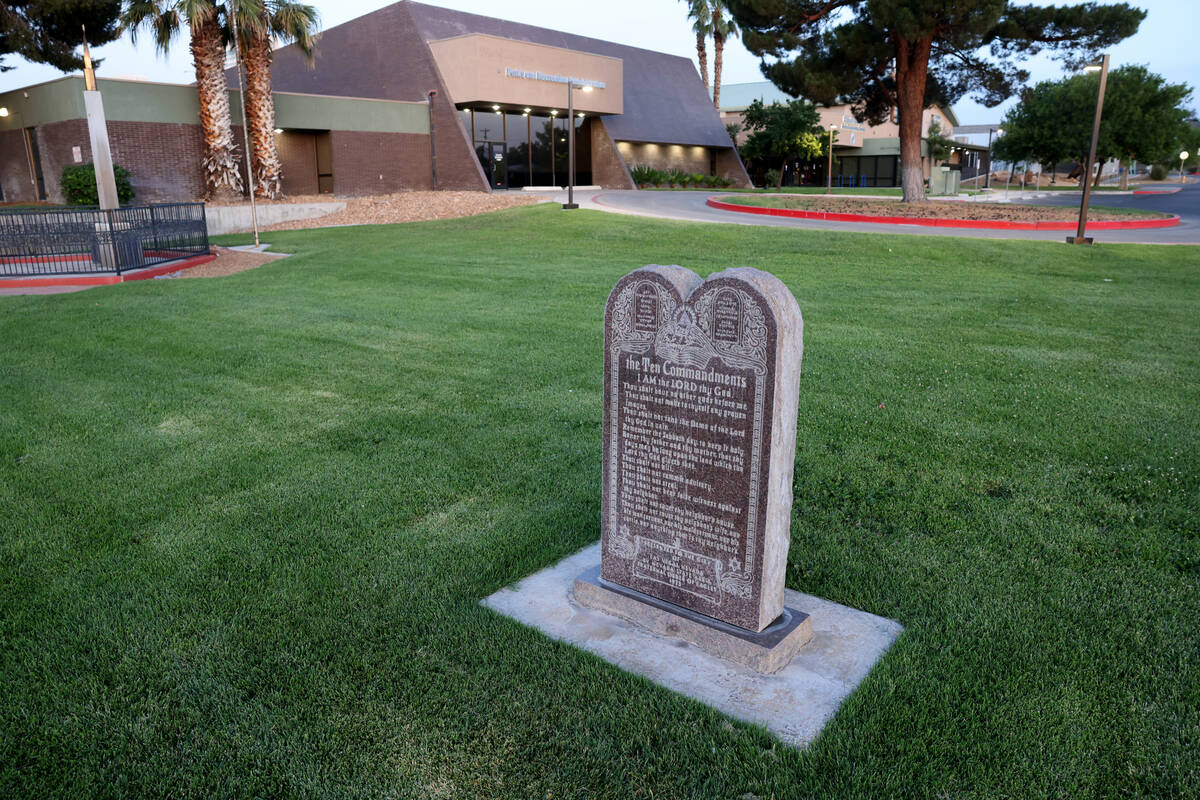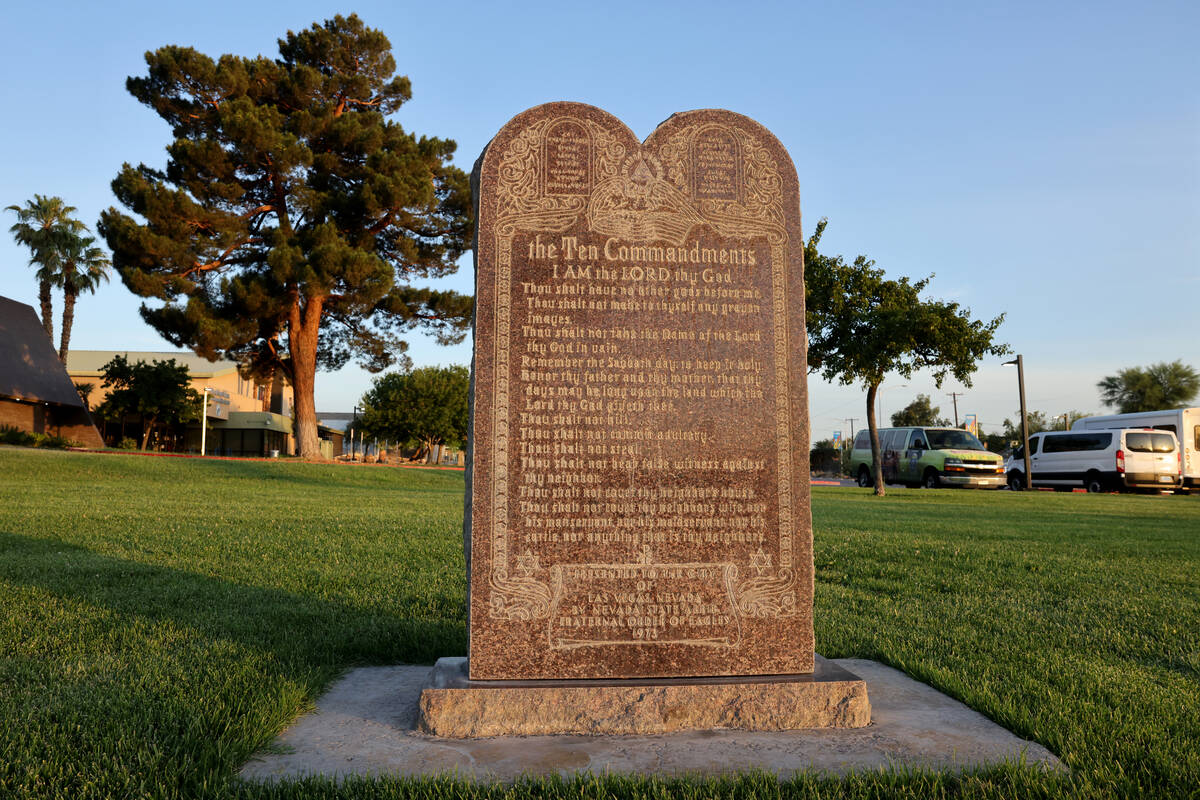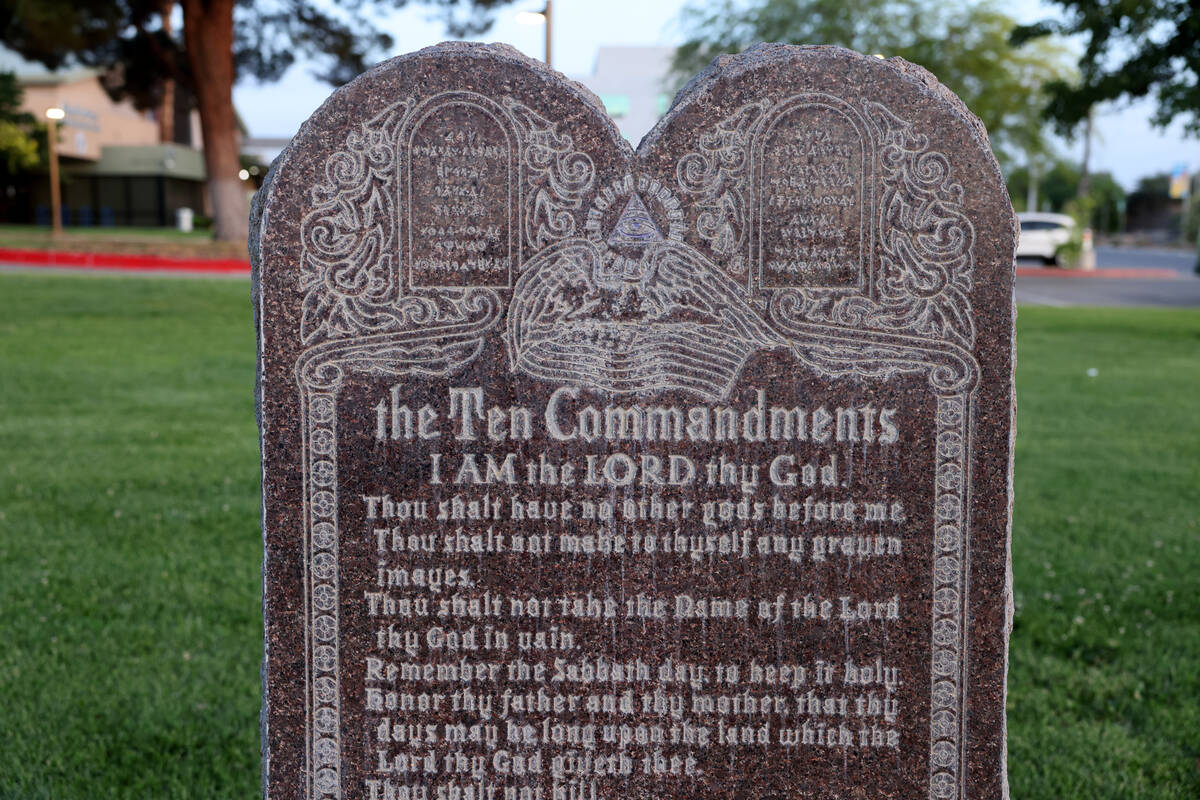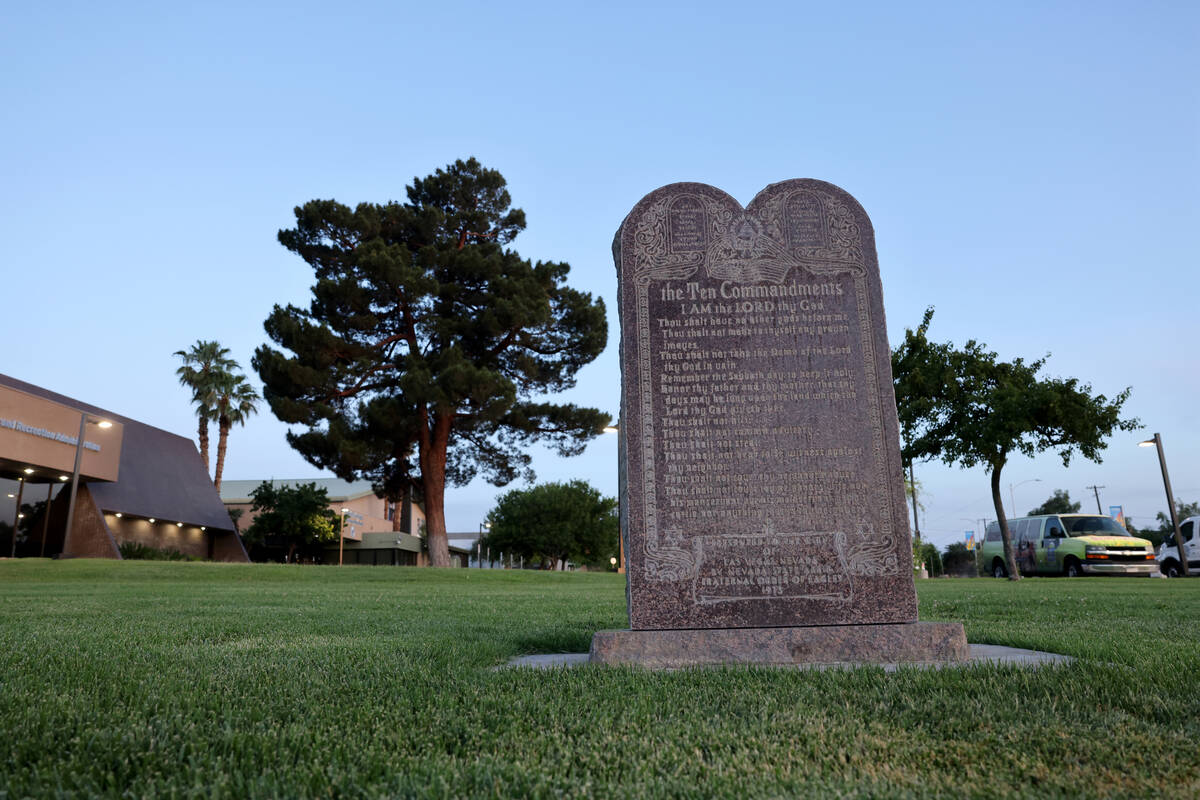What’s the story about this Ten Commandments pillar on Las Vegas land?
Why is there a monument with the Ten Commandments on land owned by the city of Las Vegas?
The roughly 1,600-pound, five-foot tall stone pillar has stood on a large patch of grass on city parks and recreation land, formerly Squires Park, since its installation a half century ago in 1973.
On the southwestern corner of the intersection of Las Vegas Boulevard North and Bonanza Road, next to the Dula Community Center, 451 E. Bonanza, the structure appears to be two tablets fused together, similar to those famously held, and later thrown, by Moses, the leader of the Israelites, as told in the Old Testament.
Etched on its polished red granite face are the religious precepts that Jews and Christians believe were personally written by God into stone and given to Moses.
The first four commandments are all about peoples’ relationship to God, while the last six are meant as a code of conduct for how people should relate to other people, according to bible.org.
It was a donation by the Fraternal Order of the Eagles, an international non-profit organization that began sending duplicates of the monument to cities all over the country in 1953.
The Eagles’ original proposal was to place it at the newly built City Hall on Stewart Avenue but city “commissioners were undecided on whether this would constitute an infringement upon the concept of separation of church and state,” based on a 1973 article in the Review-Journal.
The formal ceremony for the engraved pillar took place that November.
The existence of this tribute to the Ten Commandments has not been much of an issue over the decades, said Jace Radke, the city’s senior public information officer.
“The city is unaware of any complaints about the presence of the monument on city property,” Radke said.
“Its placement is in an area off to the side of the Dula Community Center, and is not intended to promote a particular religion or religious practice,” he said.
Radke cited the U.S. Supreme Court ruling in the case of Van Orden vs. Perry in 2005, which he said “dealt with a similar monument in the State of Texas establishing that while such monuments have religious connotations they are also considered to be features of historical character that do not conflict with the separation of church and state.”
In that case, with the court voting 5-4, Justice Stephen Beyer cast the deciding vote, stating that the Ten Commandments, with its religious context, may also represent “a secular moral message” and also “a historical message.”
Marc Randazza, a Las Vegas lawyer specializing in constitutional law, said it does not appear that the longtime monument is controversial.
“If it’s been there that long without incident, I question whether someone would object to it being there,” Randazza said. “Personally, I’d leave it alone unless there are some compelling facts that I’m not aware of.”
The Eagles trace their monument program to 1947, when Minnesota Judge E. J. Ruegemer, while sentencing a youngster in a criminal case, told him to learn the Ten Commandments, according to the website of the Virginia-based Jefferson Madison Center for Religious Liberty.
In 1951, Ruegemer, an Eagles member, convinced the Fraternal Order to begin sending framed copies of the commandments to Minnesota courts and schools “to indoctrinate youths in Judeo-Christian morality” and two years later he turned it into a national campaign.
Then came the celebrated movie director Cecil B. DeMille, whose star-studded epic movie “The Ten Commandments” would come out in 1956. DeMille, made aware of the project, called Ruegemer urging him to distribute bronze plaques of the commandments. Ruegemer recommended tablet-like granite monuments instead, and the Eagles had the first one installed in Chicago in 1954.
Eventually, about 180 of the pillars were set up, at the expense of the Eagles group, in parks, schools, libraries, courthouses and state capital buildings across the country.
In Nevada, duplicates of the monument stand in Carson City, Fallon, Lovelock, Sparks, Virginia City, Yerington and Winnemucca, according to the Madison Center.
Contact Jeff Burbank at jburbank@reviewjournal.com or 702-383-0382. Follow him @JeffBurbank2 on Twitter.





















